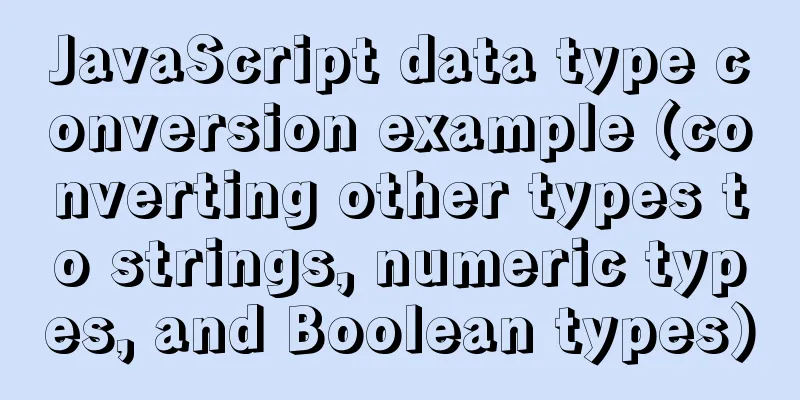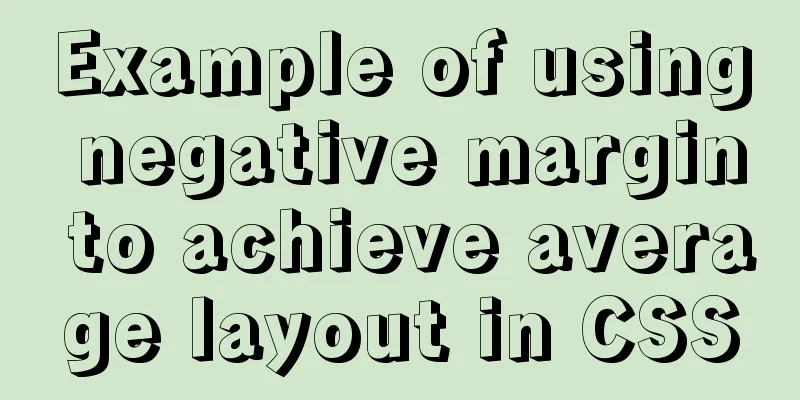Web page CSS priority is explained in detail for you

|
Before talking about CSS priority, we need to understand what CSS is and what CSS is used for. First, let us give a brief explanation of CSS: CSS is the abbreviation of Cascading Style Sheets. Its specifications represent a unique development stage in the history of the Internet. Nowadays, for those who are engaged in web page production, there should be few who have not heard of CSS, because we often need to use it in the process of making web pages. Secondly: We can use CSS to set a rich and easy-to-modify appearance for the document to reduce the workload of web page makers, thereby reducing the cost of production and subsequent maintenance. In fact, it is completely redundant to talk about what CSS is and what its functions are now. I believe that friends who are engaged in web page production have already come into contact with it to some extent. Now, let's get back to today's topic: 1. What is CSS priority? The so-called CSS priority refers to the order in which CSS styles are parsed in the browser. 2. CSS priority rules Since styles have priorities, there will be a rule to determine the priority, and this "rule" is the focus of this article. Specificity in a style sheet describes the relative weight of different rules. The basic rules are:
Finally, write the three numbers in the correct order without spaces or commas to get a three-digit number (CSS 2.1 uses four digits). (Note that you need to convert the number into a larger number that ends with three digits). The final list of numbers corresponding to the selectors makes it easy to determine which higher numbered features override lower numbered ones. For example:
3. Selector list for feature classification The following is a list of selectors categorized by characteristics:
Just looking at the table above, it seems difficult to understand. Here is another table:
From the above, we can easily see that the weight of HTML tags is 1, the weight of CLASS is 10, the weight of ID is 100, and the weight of inheritance is 0 (which will be discussed later). According to these rules, the number strings are added bit by bit to get the final weight, and then compared bit by bit from left to right when making comparisons. The priority issue is actually a conflict resolution issue. When the same element (content) is selected by a CSS selector, different CSS rules must be selected according to the priority. There are actually many issues involved. At this point, we have to talk about the inheritance of CSS. Multiple CSS style files are loaded in the web page, one of which is the style file that comes with the Ext library, which defines some styles for all tags, causing the original web page to display incorrectly. By finding the corresponding style, the correct style is reset. Add the new style to the body tag, but two styles appear and the Ext style is still valid. Finally, I found that I didn't add * when setting the new style, which made it only effective for the body tag but not for the sub-tags. The following is the modified style Copy code The code is as follows:.diy, .diy *{ box-sizing: content-box; -moz-box-sizing : content-box; -webkit-box-sizing: content-box; } When multiple styles are defined for a tag and there is a conflict between the styles, the priority is "Style defined for ID" > "Style defined for class" > "Style defined for tag type". For example, the following styles Copy code The code is as follows:div{ border:2px solid #0000FF; } .powerHeader{ border:2px solid #00ff00; } #navigation{ border:2px solid #ff0000; } In the tag <div id="navigation" class="powerHeader">, #navigation is applied first, and when #navigation does not exist, the .powerHeader style is applied, and finally the div style. At the same time, when there is a conflict between defining multiple tag classes using a single link or style, the class defined last will be applied. Understanding CSS style priority can avoid many style conflict problems in web page development. |
<<: Processing ideas for decrypting WeChat applet packages on PC in node.js
>>: Three common methods for HTML pages to automatically jump after 3 seconds
Recommend
Mysql query the most recent record of the sql statement (optimization)
The worst option is to sort the results by time a...
Detailed explanation of the difference and application of CSS3 filter:drop-shadow filter and box-shadow
To use standard CSS3 to achieve the shadow effect...
CentOS IP connection network implementation process diagram
1. Log in to the system and enter the directory: ...
Example code for configuring monitoring items and aggregated graphics in Zabbix
1. Install Zabbix Agent to monitor the local mach...
Complete list of CentOS7 firewall operation commands
Table of contents Install: 1. Basic use of firewa...
Detailed explanation of common usage of pseudo-classes before and after in CSS3
The before/after pseudo-class is equivalent to in...
Detailed explanation of the idea of implementing dynamic columns in angularjs loop object properties
Angularjs loop object properties to achieve dynam...
js data types and their judgment method examples
js data types Basic data types: number, string, b...
A collection of common uses of HTML meta tags
What is a mata tag The <meta> element provi...
Analysis and solution of the cause of web page style loss caused by browser automatic form filling
From the backend to the front end, what a tragedy....
Html easily implements rounded rectangle
Question: How to achieve a rounded rectangle usin...
Vue3 AST parser-source code analysis
Table of contents 1. Generate AST abstract syntax...
Detailed steps to install python3.7 on CentOS6.5
1. Download Python 3 wget https://www.python.org/...
How to implement remote access control in Centos 7.4
1. SSH remote management SSH is a secure channel ...
Overview of time configuration under Linux system
1. Time types are divided into: 1. Network time (...









